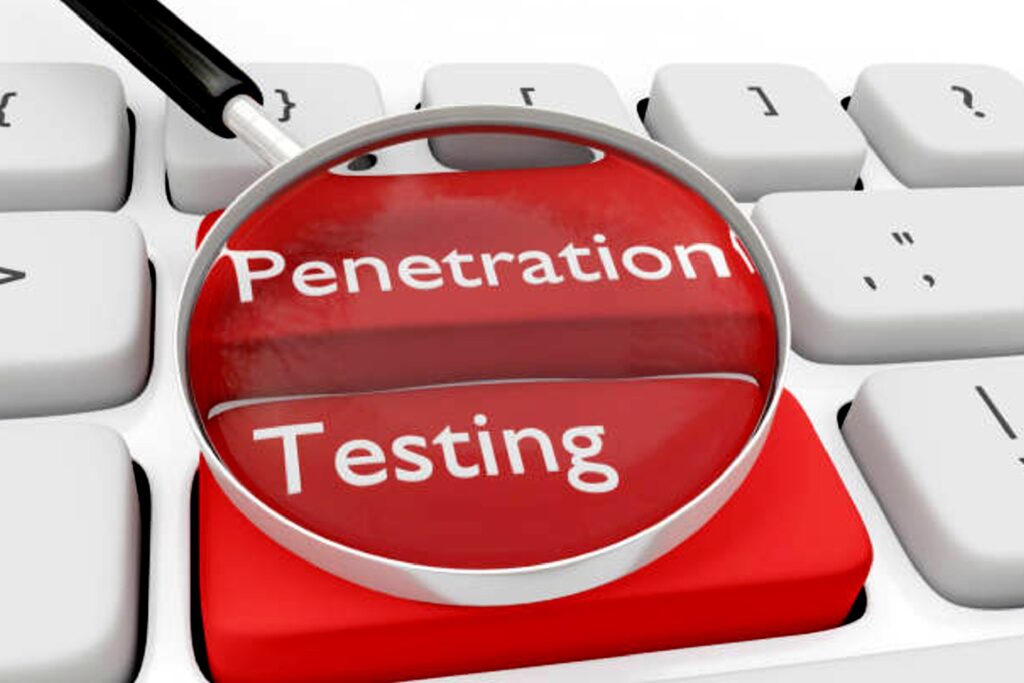How many times have you heard of some major companies’ securities being breaches in the news? One too many. The cyber security penetration testing is now the de-facto standard for for to build resilience against bad actors in the cyber space. Yet not many of these executives are buying-in to keeping the threats away. The question we should be asking is, how safe are our personal data with these firms?
There are several steps that organizations can take to improve the results of their penetration testing:
Clearly define the scope of the testing
It is important to clearly define the scope of the testing in advance, including which systems and networks will be tested and what types of tests will be conducted. This will help to ensure that the testing is focused and efficient.
Clearly defining the scope of penetration testing techniques and processes is an important step in ensuring that the testing is focused and efficient. Here are some key steps that organizations can take to clearly define the scope of their testing:
Identify the specific goals and objectives of the testing
It is important to identify the specific goals and objectives of the testing, such as identifying specific vulnerabilities, assessing the effectiveness of existing security controls, or testing the resilience of the organization’s systems and networks.
Determine the systems and networks that will be tested
It is important to determine which systems and networks will be tested, as well as any specific areas or functions that should be included or excluded from the testing. This will help to ensure that the testing is focused and relevant.
Identify the types of tests that will be conducted
It is important to identify the specific types of tests that will be conducted, such as manual testing, automated testing, or third-party tools. This will help to ensure that a comprehensive range of vulnerabilities is identified.
Communicate the scope to relevant stakeholders
It is important to clearly communicate the scope of the testing to relevant stakeholders, including technical and non-technical personnel. This will help to ensure that everyone involved understands the goals and objectives of the testing and can properly prepare for it.
Review and update the scope as needed
It is important to regularly review and update the scope of the testing to ensure that it remains relevant and focused. This may involve adding or removing systems and networks from the testing, or adapting the testing process to address new types of threats or vulnerabilities.
Overall, by clearly defining the scope of the testing, organizations can ensure that the testing is focused and efficient, and that the results are relevant and meaningful. By following these steps, organizations can more effectively identify and address vulnerabilities in their systems and networks.
Use a variety of testing techniques
It is important to use a variety of testing techniques, such as manual testing, automated testing, and third-party tools, to ensure that a comprehensive range of vulnerabilities is identified.
Using a variety of penetration testing techniques and processes is an important step in ensuring that a comprehensive range of vulnerabilities is identified and that the testing is conducted effectively. Here are some key steps that organizations can take to use a variety of testing techniques and processes effectively:
Identify the appropriate testing techniques
It is important to identify the appropriate testing techniques based on the specific goals and objectives of the testing, the systems and networks being tested, and the potential threats and vulnerabilities. This may involve using manual testing, automated testing, and third-party tools, as well as conducting testing from both internal and external perspectives.
Define the scope of the testing
It is important to clearly define the scope of the testing in advance, including which systems and networks will be tested and what types of tests will be conducted. This will help to ensure that the testing is focused and efficient.
Engage experienced testers
Engaging experienced testers who have a deep understanding of cybersecurity and a track record of finding real-world vulnerabilities can significantly improve the results of the testing.
Communicate the findings effectively
Clearly communicating the findings of the testing to relevant stakeholders, including technical and non-technical personnel, can help to ensure that the vulnerabilities identified are addressed in a timely manner.
Follow up on the findings
It is important to follow up on the findings to ensure that the vulnerabilities have been properly addressed and that the organization’s systems and networks are secure. This may involve conducting additional testing or implementing additional security controls.
Overall, by using a variety of testing techniques and processes, organizations can more effectively identify and address vulnerabilities in their systems and networks. By following these steps, organizations can ensure that their testing is comprehensive and effective.
Engage experienced testers
Engaging experienced penetration testers is an important step in ensuring that a comprehensive range of vulnerabilities is identified. This can also mean that the penetration testing is conducted effectively.
Here are some key steps that your company can take to engage experienced penetration testers effectively:
Define the scope of the testing
It is important to clearly define the scope of the testing in advance, including which systems and networks will be tested and what types of tests will be conducted. This will help to ensure that the testing is focused and efficient.
Identify experienced testers
It is important to identify experienced testers who have a deep understanding of cybersecurity and a track record of finding real-world vulnerabilities. This may involve reviewing the testers’ resumes and portfolios, as well as seeking recommendations from industry peers.
Clearly communicate the testing objectives
It is important to clearly communicate the testing objectives to the testers, including the specific vulnerabilities that the organization is concerned about and the overall goals of the testing. This will help to ensure that the testers are able to focus their efforts on the areas that are most relevant to the organization.
Provide access to the necessary resources
It is important to provide the testers with access to the necessary resources, such as systems and networks, to ensure that they are able to conduct the testing effectively.
Follow up on the findings
It is important to follow up on the findings of the testing to ensure that the vulnerabilities identified have been properly addressed and that the organization’s systems and networks are secure. This may involve conducting additional testing or implementing additional security controls.
Overall, engaging experienced penetration testers is an important step in ensuring that a comprehensive range of vulnerabilities is identified and that the testing is conducted effectively. By following these steps, organizations can more effectively engage experienced testers and take the necessary action to address the identified vulnerabilities.
Regularly review and update testing processes
Regularly reviewing and updating testing processes can help to ensure that testing remains effective and efficient. This may involve incorporating new testing techniques, tools, or adapting the testing process to address new types of threats or vulnerabilities.
Here are some key steps that organizations can take to regularly review and update their penetration testing processes effectively:
Review the testing results
It is important to review the results of the testing on a regular basis to identify any trends or patterns in the vulnerabilities identified. This may involve analyzing the types of vulnerabilities identified, the systems and networks where vulnerabilities were found, and the overall effectiveness of the testing process.
Identify areas for improvement
Based on the results of the testing, it is important to identify areas for improvement in the testing process. This may involve implementing new testing techniques or tools, adapting the testing process to address new types of threats or vulnerabilities, or improving communication with stakeholders.
Develop and implement a plan
Based on the identified areas for improvement, it is important to develop and implement a plan to address these issues. This may involve updating policies and procedures, training staff on new testing techniques, or implementing new security controls.
Monitor and review the process
It is important to monitor and review the updated testing process to ensure that it is effective and efficient. This may involve conducting additional testing or seeking feedback from stakeholders.
Repeat the process
It is important to regularly repeat the process of reviewing and updating the testing process to ensure that it remains effective and efficient over time. This may involve conducting testing on a regular basis, such as quarterly or annually.
Communicate findings effectively
Clearly communicating the findings of the testing to relevant stakeholders, including technical and non-technical personnel, can help to ensure that the vulnerabilities identified are addressed in a timely manner.
Effective communication of penetration test findings is an important step in ensuring that vulnerabilities identified during the testing are addressed in a timely and effective manner. Here are some key steps that organizations can take to communicate penetration test findings effectively:
Document the findings clearly
It is important to document the findings of the penetration test in a clear and concise manner, including details such as the specific vulnerabilities identified, the potential impact of the vulnerabilities, and the recommended actions to address the vulnerabilities.
Use clear language
It is important to use clear, non-technical language when communicating the findings to stakeholders who may not have a technical background. This will help to ensure that the findings are easily understood by all relevant parties.
Prioritize the findings
It is important to prioritize the findings based on the severity of the vulnerabilities and the potential impact on the organization. This will help to ensure that the most critical vulnerabilities are addressed first.
Communicate the findings to the appropriate stakeholders
The findings of the penetration test should be communicated to the appropriate stakeholders, including technical staff who will be responsible for addressing the vulnerabilities and non-technical staff who may be impacted by the vulnerabilities.
Follow up on the findings
It is important to follow up on the findings to ensure that the vulnerabilities have been properly addressed and that the organization’s systems and networks are secure. This may involve conducting additional testing or implementing additional security controls.
Overall, effective communication of penetration test findings is essential to ensure that vulnerabilities are properly addressed and that the organization’s systems and networks are secure. By following these steps, organizations can more effectively communicate the findings of their penetration tests and take the necessary action to address the identified vulnerabilities.
Overall, by following these steps, organizations can improve the results of their penetration testing and more effectively identify and address vulnerabilities in their systems and networks.
Your Takeaway
To improve your penetration testing, result’s effectiveness and processes, you should use a variety of testing techniques. This means, engaging experienced testers, communicate findings effectively. In addition, follow up on findings, and regularly review and update testing processes. When you follow these steps, your organizations can more effectively identify and address vulnerabilities in their systems and networks.




